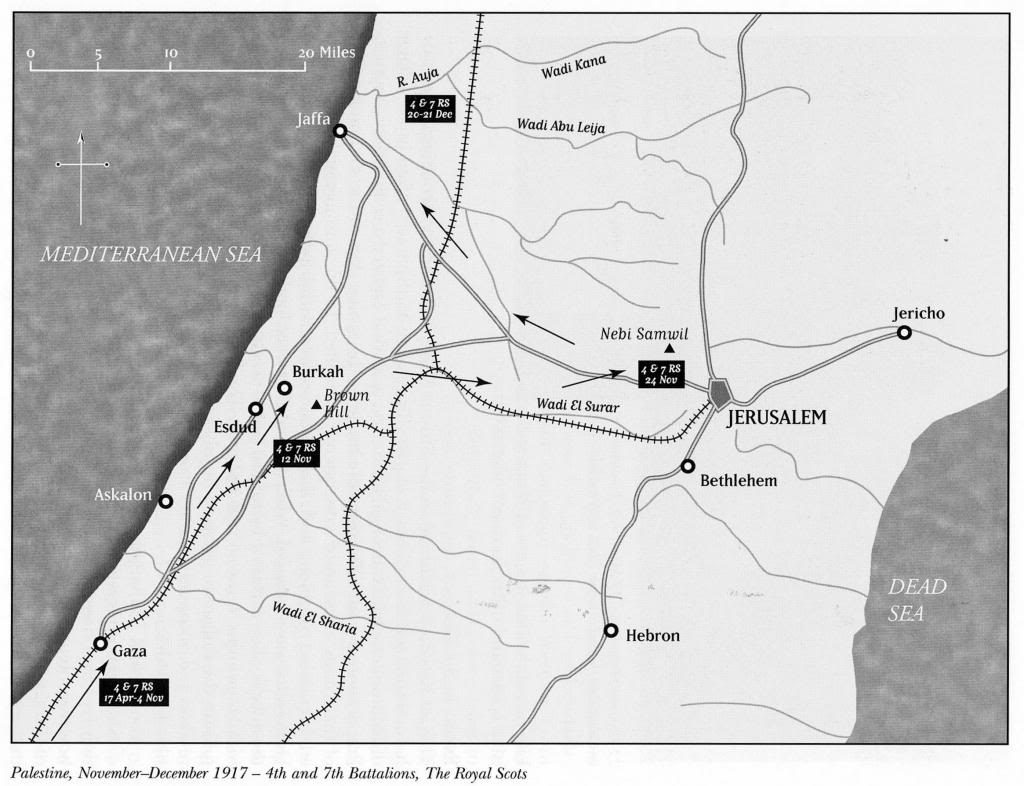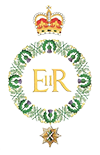Egypt And Palestine
OPERATIONS IN EGYPT AND PALESTINE 1916-17
When the 4th and 7th Battalions withdrew from Gallipoli they moved to the island of Mudros in the Aegean and then to Egypt in January 1916. Throughout the first part of that year they were employed protecting the Suez Canal. The heat caused more suffering than the enemy and the only sign of the Turkish forces was the occasional aircraft.
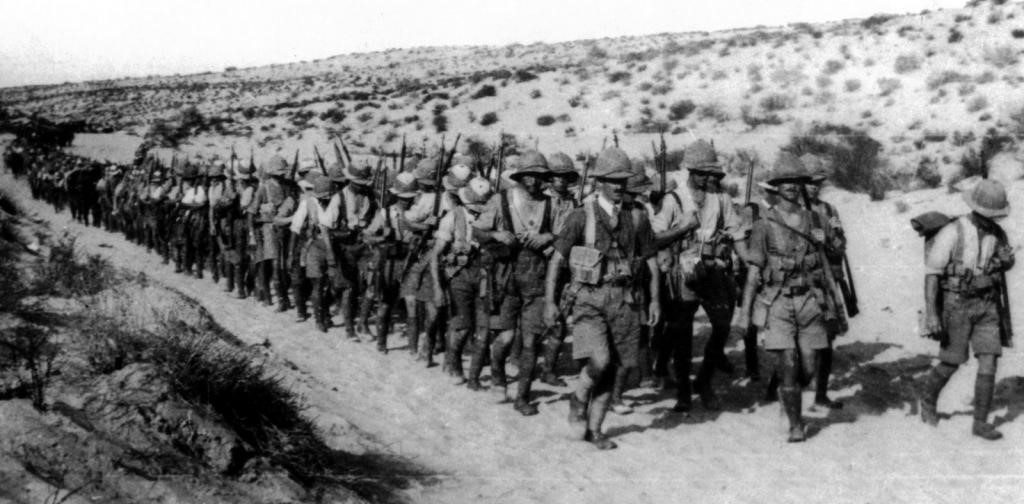
7 RS acclimatising in Egypt
Both Battalions trained hard; in particular they got used to marching long distances in the desert sand and observing strict water discipline. In mid-summer the British established a defensive line some twenty-five miles east of the Canal on the northern edge of the Sinai Desert. The monotony was broken in July when a Turkish force, some 18,000 strong, advanced across the desert and attacked the British position. The 4th Battalion was in reserve and saw little of the action. The 7th Battalion was at a rest camp near Alexandria when the Turks were first spotted but it was swiftly moved forward by rail. However, it experienced little close infantry fighting and the Turkish attack was halted by a mounted counter-attack.
The Turks withdrew and, in October, the British force began an unopposed advance to the east. By the end of the year it had reached El Arish, close to the Mediterranean, 100 miles east of the Suez Canal and only some 25 miles from the border with Palestine. The advance into Palestine was dependent upon the capture of Gaza which was strongly defended. Neither battalion was involved in the initial, unsuccessful, attack at the end of March 1917. A second attempt the following month was also a failure. Both battalions were involved on that occasion and sustained about 150 casualties. It quickly became apparent that the capture of Gaza would require considerable preparation, indeed it did not fall until early November. During the heavy fighting both Battalions distinguished themselves. The 4th in particular, which had been given the daunting task of storming a key position in the defences, earned the unstinting praise of its Brigade Commander. Bearing in mind the intensity of the fighting the casualties were not unduly severe – some 200 in the 4th Battalion and a little under 100 in the 7th Battalion.
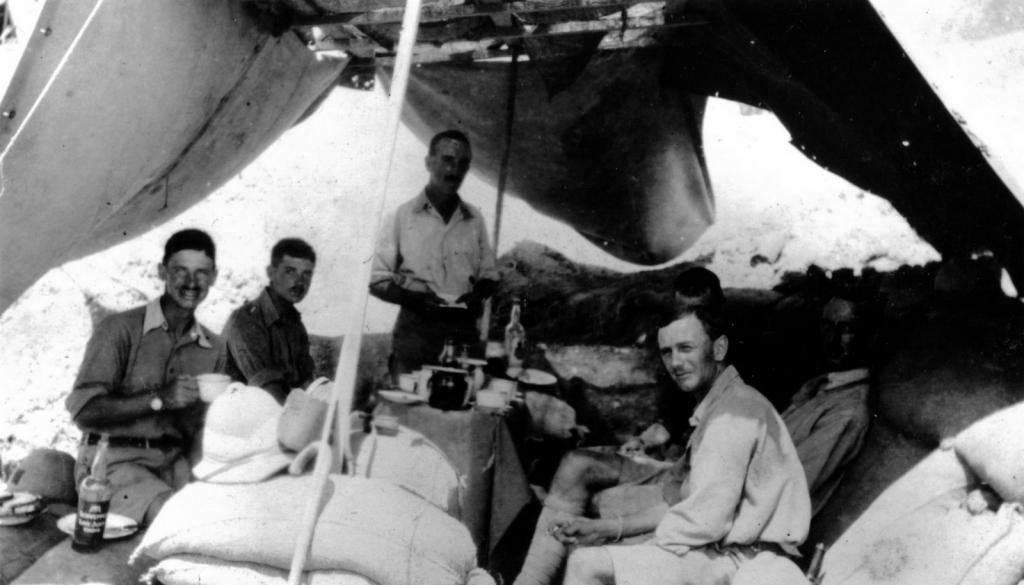
7 RS Officers’ Mess, Palestine 1917
With the collapse of the defences around Gaza the subsequent advance quickly became a relentless pursuit. Both Battalions distinguished themselves again during successful attacks on Burkah, some 25 miles north-east of Gaza in mid-November. Major W R Kermack MC, then commanding a company in the 7th Battalion left this account of the attack on the Turkish rear-guard positions.
One battalion of the brigade (4th RS) was, even as we company commanders were getting our orders, already about to advance against an isolated hill east of Burkah, which became known as Brown Hill; we ourselves, with two companies of the 8th Scottish Rifles supporting us and covering our left flank, had the task of capturing the ridge which ran north-westwards from Burkah. The village itself, with its formidable cactus hedged gardens, we were ordered to leave strictly alone.
For a rear-guard position, this was undoubtedly a strong one. Between the wooded outskirts of Esdud, where we deployed, and the ridge which was our objective, were nearly three miles of apparently unbroken plain. A study of the map suggested that there might be cover half way across in the Wady el Mejma, and rather more than three-fourths of the way in another unnamed wady, which, about two miles due west of Burkah, unites with the Wady el Mejma. I resolved, if practicable, to bring the Company Lewis Gun ponies with ammunition as far as this first wady, and settle them there under cover. Apart from this it seemed impossible to forecast the course of events. We had already “dumped” our packs and put our reserve rations and cardigans into our haversacks. We now deployed in artillery formation on a wide front, and about 11.00 am began our advance.
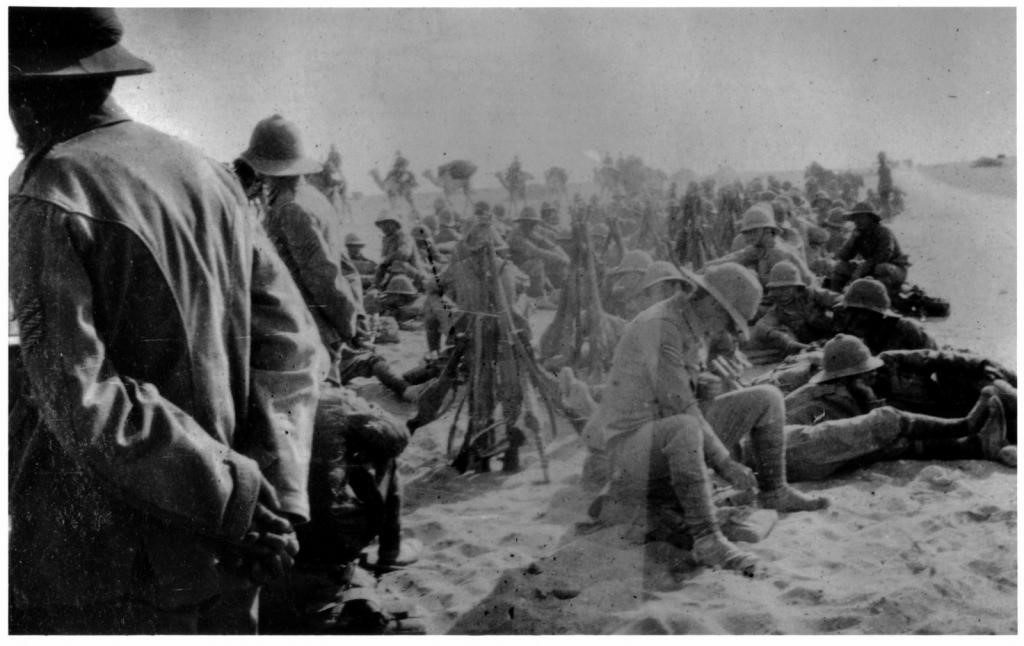
7 RS resting on the march in Palestine
The Turkish artillery open up almost at once with shrapnel and high explosive; but we pushed right on, almost without checking, across the Wady el Mejma, which proved to be twelve to fifteen feet deep, with steep but broken sides. Then, coming under machine-gun fire, from both the ridge for which we were making and from the flanks, we ran forward to the second wady (which was, I think, the enemy’s first trench). This was much shallower, indeed hardly breast-high, and there we formed a firing line. Our line seemed very thin, but the longer we stayed in this trench the more accurate the enemy shrapnel became. The only course was to push on; and the line worked up, bit by bit, quite on the Drill Book pattern, coming at last under the curve of the crest which gave better shelter from the shrapnel. From there we at last rushed the crest, to find the shallow trench there almost unoccupied.
Our orders had been to consolidate the position during daylight on the near side of the crest line, and not to push on over it until after dark; and these orders we proceeded to carry out, one company holding the crest of the ridge while the remainder started digging in down the slope. Meanwhile on our right things were not doing too well. The 4th Battalion had met with much heavier opposition than we did; and though they had taken their objective, we could, from our own ridge, see them being heavily counter-attacked, and driven back down the slope. There they very gallantly managed to hold on for the rest of the day till reinforced by a Gurkha battalion when, tired as they were, the handful of them left gave the Gurkhas a lead up the hill.
The Turks, who had gone back from our ridge, had taken up a position on another ridge, 8-900 yards in rear, where they had a third line of trenches partially prepared. Now, about sunset, came orders that this second ridge had at once to be taken. There was again no time for preparation, nor indeed much preparation that we could make. The attacking companies now moved off in two lines in the quickly falling dusk. After a time came sound of a burst of rifle fire, but no report came back of their failure or success. However, much to our relief, the scouts we sent forward reported that the position was safely in our hands.
The attack undoubtedly came as a surprise to the Turks, or our losses would have been much more heavy than they were. As was natural in the darkness, and where it had been possible to arrange little beforehand, there was a good deal of confusion, but the leadership of the officers and NCOs brought, out of confusion, success.
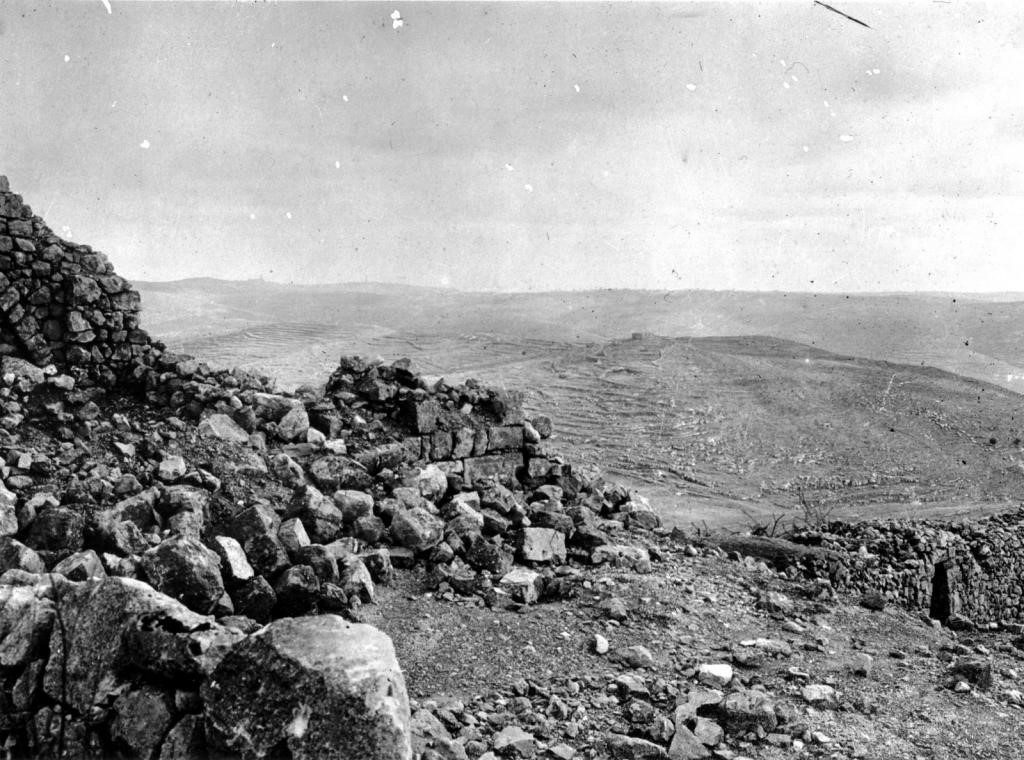
View from Nebi Samwil towards Jerusalem
Thereafter the Turkish forces split, with some heading north, and others to the hills in the east. By the end of November, having marched through some desolate, rocky country, both battalions were converging on Nebi Samwil, the key to Jerusalem. There the 7th in particular, was involved in further heavy fighting. The Nebi Samwil feature fell in early December enabling the British forces to enter Jerusalem on 9 December. Towards the end of that month both battalions participated in a highly successful surprise night attack across the River Auja to help secure the port of Jaffa. That operation was a fitting end to a remarkable campaign in which the 4th and 7th Battalions had played a prominent role. It also marked the end of the campaign in Palestine, the only major Allied success of the year.
